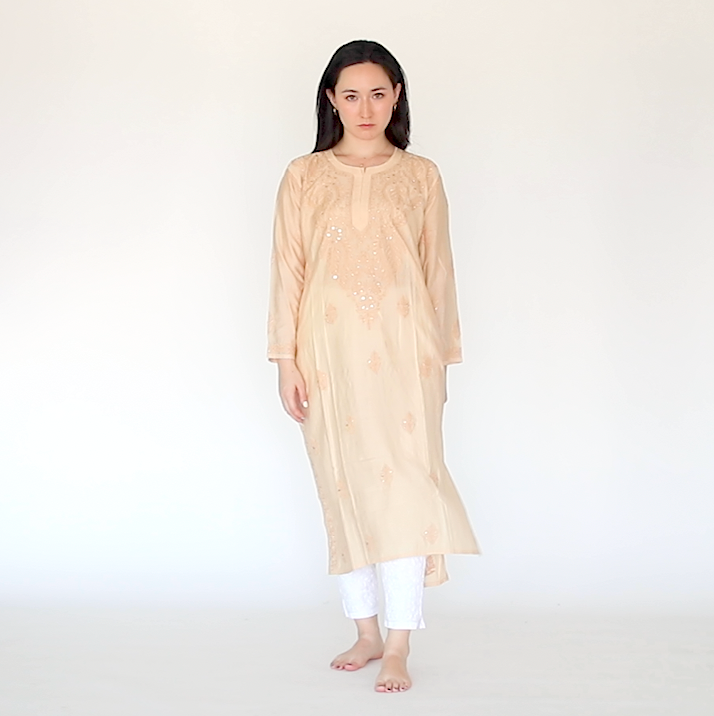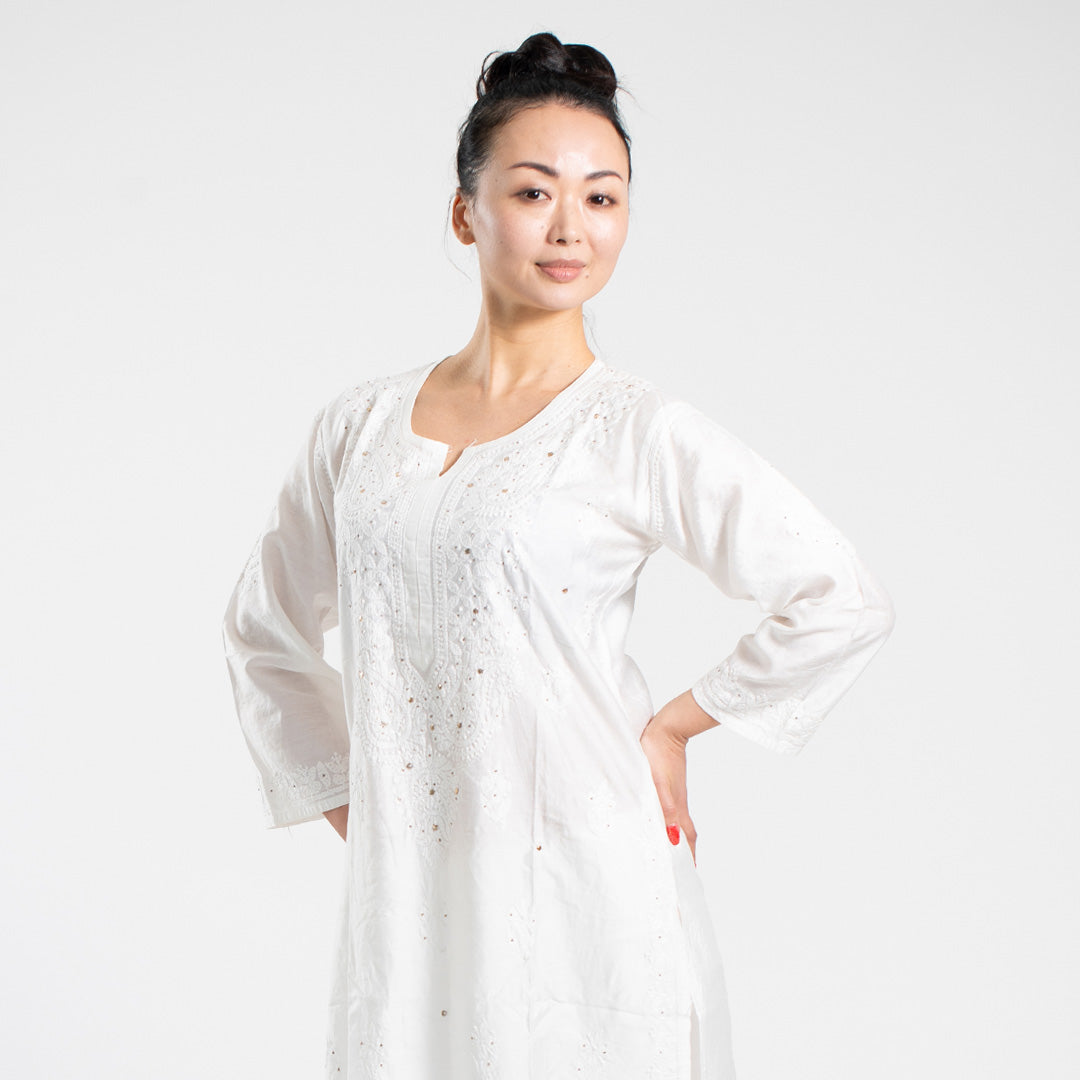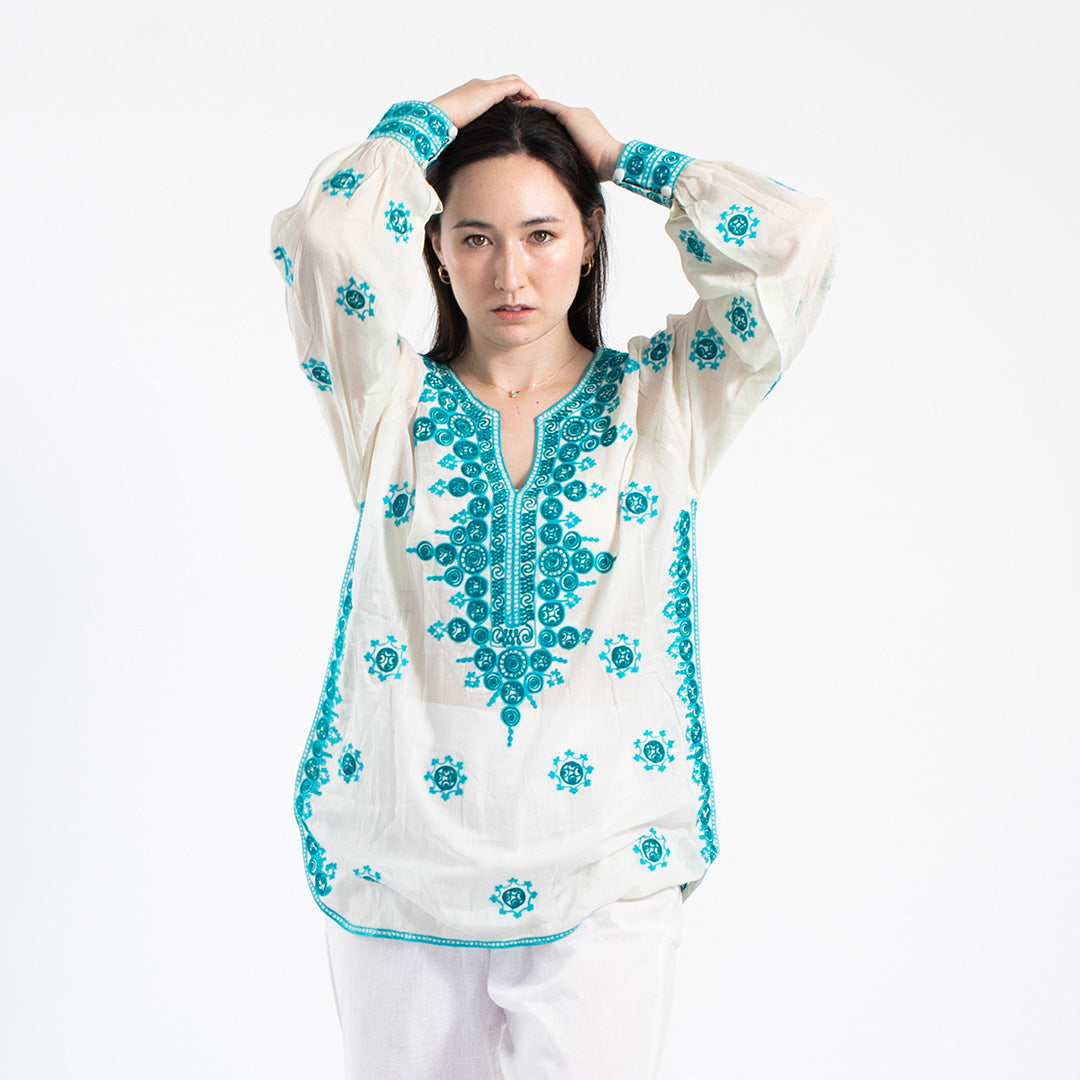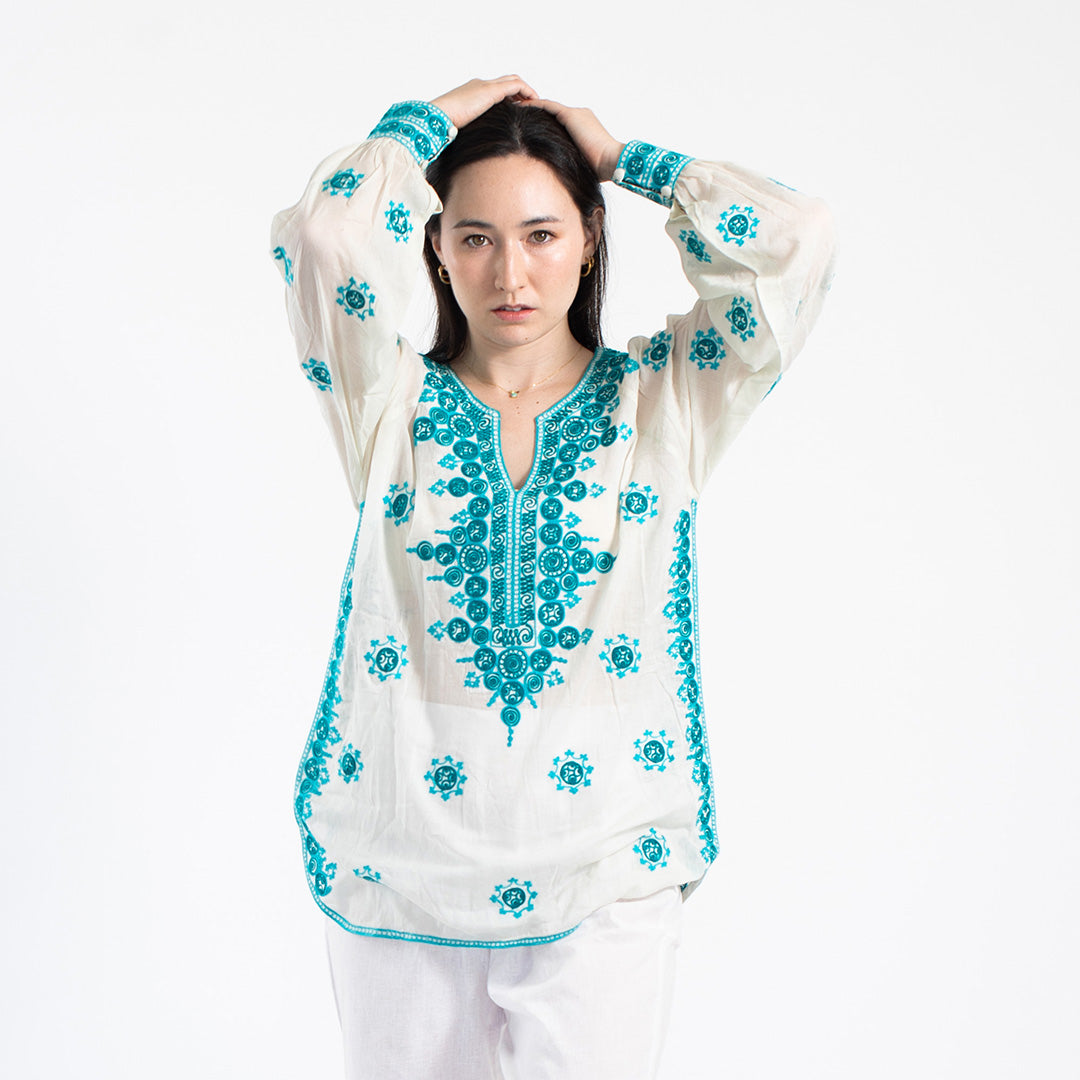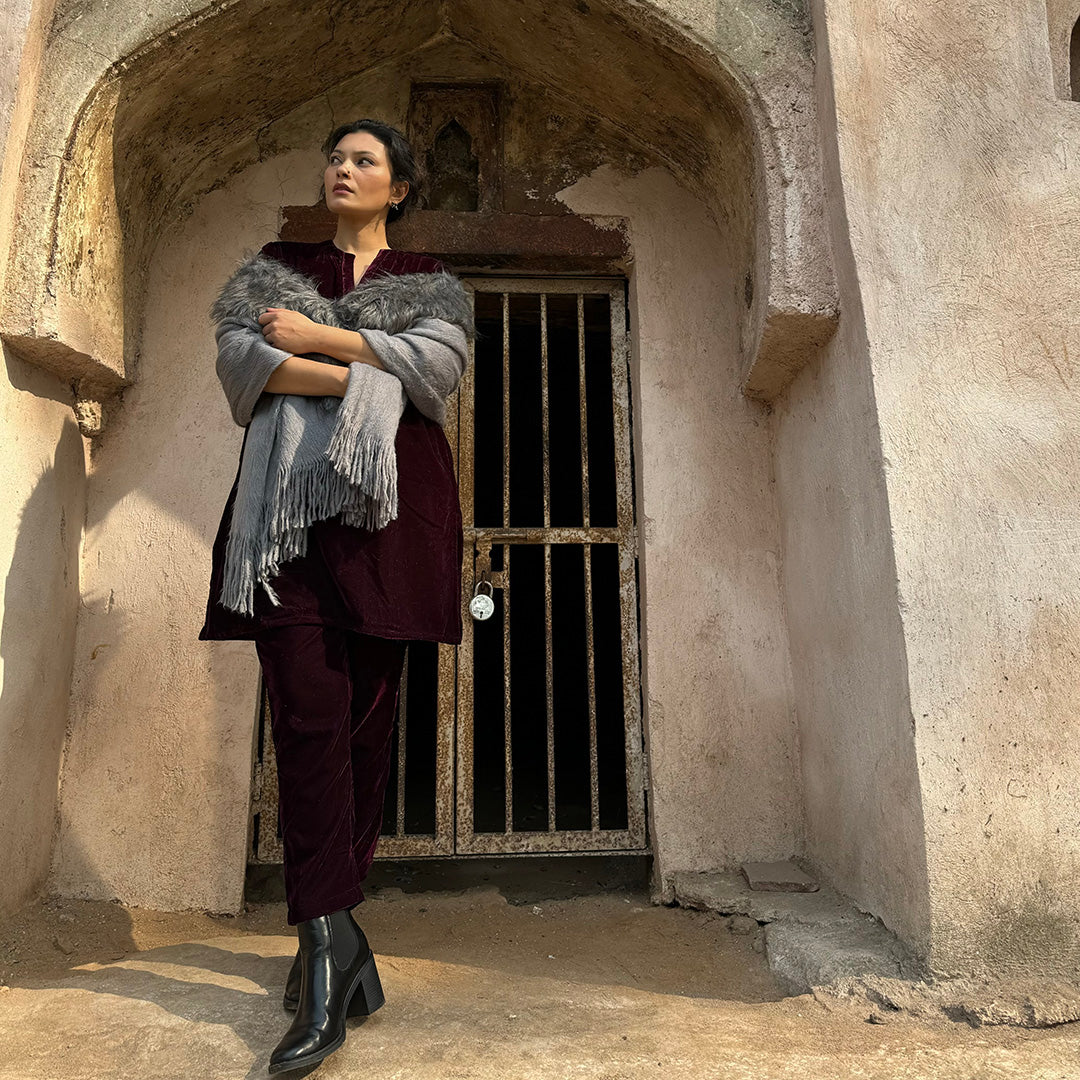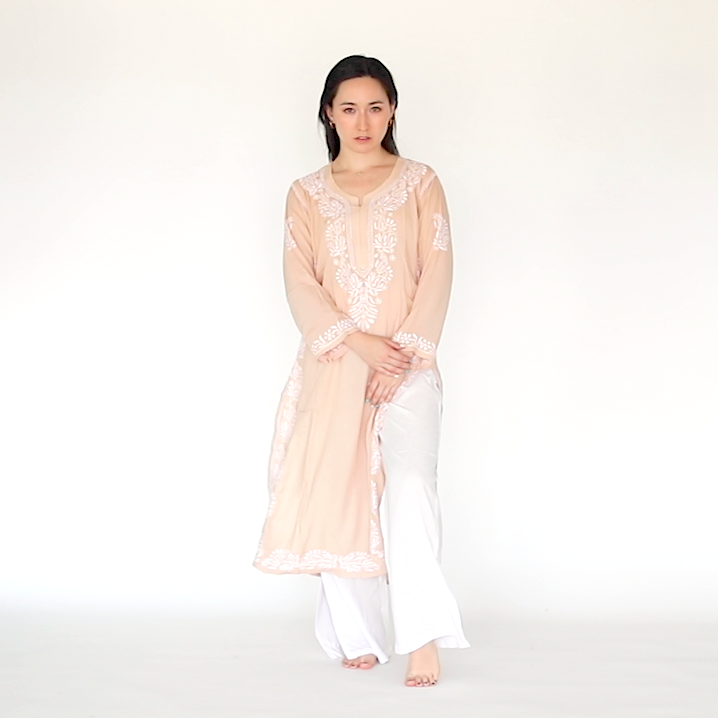インドの陶器は、この国の豊かな文化遺産と芸術の多様性の証です。古代から現代に至るまで、インドの陶磁器は技術、スタイル、社会慣行の変化を反映して進化してきました。
インド陶磁器の起源
インダス渓谷文明 (紀元前 3300 ~ 1300 年): インドの陶器の最古の例はインダス渓谷文明に由来します。多くの場合、ろくろで作られた洗練された陶器には、さまざまな形や複雑なデザインが含まれており、当時の高度な職人技が表れています。
ヴェーダ時代 (紀元前 1500 ~ 500 年): この時代の陶磁器は通常「素焼き」で、シンプルな幾何学的なモチーフが特徴でした。陶器は、保存瓶、調理鍋、儀式用品などの一般的なアイテムとともに、日常生活において重要な役割を果たしました。
中世 (西暦 700 ~ 1700 年): イスラムの影響の導入により、釉薬(ゆうやく)をかけた陶器がインドに持ち込まれました。ペルシャ発祥の青い陶器は、地元のスタイルと外国のスタイルを融合させて、ラジャスタン州などの地域で人気になりました。
植民地時代 (西暦 1757 ~ 1947 年): この期間、ヨーロッパのスタイルと技術がインドの陶器に影響を与えました。しかし、伝統的な手法やデザインは、こうした新しい影響を受けながらも繁栄し続けました。
インド陶磁器の種類
インドの陶器は驚くほど多様で、各地域が独自のスタイルと技術を誇っています。
テラコッタ:Terracotta
最も古い形式の 1 つであるテラコッタは、粘土を低温で焼きます。西ベンガル州とグジャラート州で一般的で、置物、装飾品、機能的な陶器が含まれます。
青い陶器:Blue Pottery
ペルシャを起源とし、ジャイプールで繁栄したこのタイプは、独特の釉薬方法を使用しており、印象的な青い色合いをもたらします。タイル、花瓶、装飾品の製造に使用されます。
黒陶器:Black Pottery
ウッタルプラデーシュ州のニザマバードは、特別な技術を使用して光沢のある黒色の仕上げを行う黒色陶器で有名です。この陶器は、エレガントで繊細なデザインで知られています。
クルジャ陶器:Khurja Pottery
ウッタル プラデーシュ州のクルジャ陶器は、その鮮やかな色と複雑なパターンで知られています。食器やタイル、ガーデンアクセサリーなど幅広い商品を取り揃えています。
炻器(せっき)と磁器:Stoneware and Porcelain
インドの現代陶磁器には、機能的および装飾的な目的の両方に使用される炻器や磁器が含まれます。これらは多くの場合、耐久性と優れた仕上げが特徴です。
インド陶芸の真髄:Essence of Indian Ceramics
陶器は宗教的および文化的実践に不可欠です。テラコッタの置物や陶器は、繁栄と豊穣を象徴し、儀式、祭り、日常生活でよく使用されます。インドの陶器は、その複雑なデザイン、鮮やかな色、地域ごとのバリエーションでも知られています。それぞれの作品は地元の文化、伝統、職人の技術を反映しています。さらに、インドの陶器は装飾的な魅力を超えて、全国の家庭で実用的な目的にも役立っています。調理鍋から保存瓶、取り皿まで、これらのアイテムはインドの家庭の必需品です。
世界における存在感:Presence in the World
インドの陶磁器は世界市場で大きな存在感を持っています。手作りの陶器、装飾タイル、芸術的な彫刻はさまざまな国に輸出され、その職人技と芸術的価値が高く評価されています。陶芸家は定期的に国際展示会やビエンナーレにも参加し、インドの豊かな伝統と現代の革新を紹介しています。インドの陶器は世界的に高く評価されています。世界中の博物館やギャラリーがインドの陶芸を展示し、その歴史的および現代的な重要性を強調しています。
Abundance Online Shopでは、厳選されたこれらの素晴らしい陶器をインドから直接直接お届けできることを楽しみにしています。私たちのコレクションは、インドの陶磁器が体現する豊かな文化遺産と芸術の多様性を紹介します。Abundnace ホームウェア コレクションで、ご自宅でインド陶器の美しさと伝統を体験していただけることを嬉しく思います。
Ceramics of India
India's ceramics are a testament to the nation's rich cultural heritage and artistic diversity. From ancient times to the modern era, Indian ceramics have evolved, reflecting changes in technology, style, and social practices.
Origin of Indian Ceramics
Indus Valley Civilization (3300-1300 BCE): The earliest examples of Indian ceramics originate from the Indus Valley Civilization. The sophisticated pottery, often wheel-made, includes various shapes and intricate designs, showcasing the advanced craftsmanship of the time.
Vedic Period (1500-500 BCE): During this period, ceramics were typically unglazed and featured simple, geometric motifs. Pottery played a vital role in daily life, with common items including storage jars, cooking pots, and ritual objects.
Medieval Period (700-1700 CE): The introduction of Islamic influences brought glazed pottery to India. Blue pottery, originating in Persia, became popular in regions like Rajasthan, blending local and foreign styles.
Colonial Period (1757-1947 CE): European styles and techniques influenced Indian ceramics during this period. However, traditional methods and designs continued to thrive alongside these new influences.
Types of Indian Ceramics
Indian ceramics are incredibly diverse, with each region boasting unique styles and techniques:
Terracotta
One of the oldest forms, terracotta involves baking clay at low temperatures. Common in West Bengal and Gujarat, it includes figurines, decorative items, and functional pottery.
Blue Pottery
Originating from Persia and flourishing in Jaipur, this type uses a unique method of glazing that results in striking blue hues. It is used for making tiles, vases, and decorative items.
Black Pottery
Nizamabad in Uttar Pradesh is famous for black pottery, which involves using a special technique to create a lustrous, black finish. This pottery is known for its elegant and detailed designs.
Khurja Pottery
From Uttar Pradesh, Khurja pottery is known for its vibrant colors and intricate patterns. It includes a wide range of products like crockery, tiles, and garden accessories.
Stoneware and Porcelain
Modern ceramics in India include stoneware and porcelain, used for both functional and decorative purposes. These are often characterized by their durability and fine finish.
Essence of Indian Ceramics
Ceramics are integral to religious and cultural practices. Terracotta figurines and pottery are often used in rituals, festivals, and daily life, symbolizing prosperity and fertility. Indian ceramics are also known for their intricate designs, vibrant colors, and regional variations. Each piece is a reflection of the local culture, traditions, and the artisan’s skill. Moreover, beyond their decorative appeal, Indian ceramics serve practical purposes in households across the country. From cooking pots to storage jars and serving dishes, these items are a staple in Indian homes.
Presence in the World
Indian ceramics have a significant presence in the global market. Handmade pottery, decorative tiles, and artistic sculptures are exported to various countries, appreciated for their craftsmanship and artistic value. Ceramic artists also regularly participate in international exhibitions and biennales, showcasing the rich heritage and contemporary innovations of India. Indian ceramics are highly regarded worldwide. Museums and galleries across the globe exhibit Indian ceramic art, highlighting its historical and contemporary significance.
At Abundance store, we are looking forward to bringing you a curated selection of these exquisite ceramics directly from India soon. Our collection will showcase the rich cultural heritage and artistic diversity that Indian ceramics embody. We are excited for you to experience the beauty and heritage of Indian ceramics in your own home with Abundance Homeware Collection.







